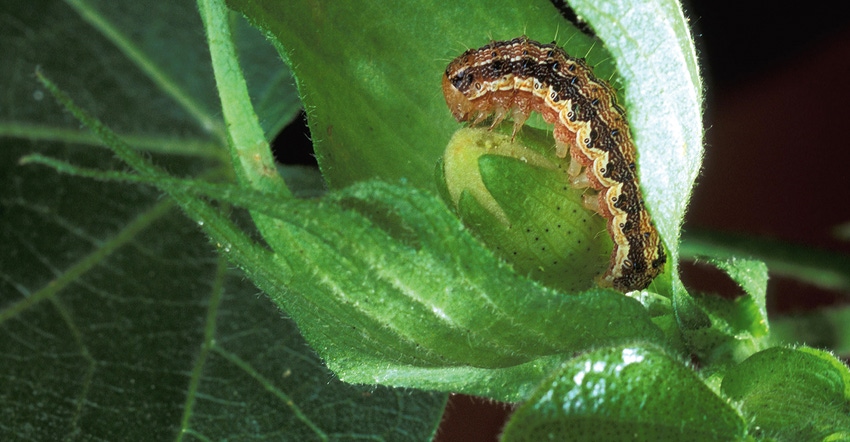
Mid-South cotton growers face several tough decisions for 2018 as they deal with hard-to-control diseases and the increasingly difficult problem of Bt-resistant worm pests.
Tucker Miller, president, Miller Entomological Service Inc., Drew, Ms., speaking Thursday at the National Conservation Systems Conferences in Memphis, Tn., said growers will need to look closely at varieties as well as other management options.
Miller, a frequent speaker at the conference, spoke to a packed meeting room about his experience over the last several years with bacterial blight and target leaf spot, potassium-associated foliar diseases. “Growers are going to need to make several important variety selection decisions this coming season, and those decisions need to be made based on good information,” says Miller. “They’ll need a variety that is resistant to bacterial blight and, because there is no variety that provides resistance to target leaf spot, they’ll have to consider other management options to try to control its level and to lessen the effect or impact of the leaf disease.”
Options may include decreasing seeding rates to produce a thinner stand, aggressive Pix management, possibly growing skip row cotton, or selecting a variety or row configuration that lends itself to a more open canopy to help minimize the spread of target leaf spot. “Growers might also try to manage this disease with more timely irrigation methods or even less irrigation,” says Miller. “Leaf shed was so bad in many parts of the fields I worked, if you squatted and looked down the row, you could see a rabbit two-hundred yards away.”
The Mid-South is supposedly in the low to medium risk range of the country for this problem, but Miller questions those range boundaries. Several factors, including irrigation and over-fertilization of nitrogen, may be exacerbating the problem. “It’s hard to get farmers to cut back to 80 or 90 units of nitrogen when they’re accustomed to putting out 120, and they don’t want to run out,” says Miller. “Fungicides are another option, but at $40 an acre, if you spray it twice, I just don’t know if it’s a cost effective application.”
Fungicide
Based on one data set Miller received from 2016 target spot research, a fungicide application to control the disease may provide a significant yield increase only 20 percent of the time. “It’s difficult for me to suggest an application of fungicide at first or second bloom with an 80 percent chance it won’t help,” says Miller.
Miller also talked frankly about the resistant worm (heliothis) problems many growers across the Mid-South and Southeast experienced last year. According to Miller, the problem started with a generation of worms exposed to Bt corn with the two identical proteins found in Bollgard ll or WideStrike ll cotton varieties. “When worms go through a generation and come out of corn then move to cotton, they’re exposed to the same proteins twice, but the second time, they’re surviving,” says Miller.
Dried bloom tags were everywhere when Miller scouted some Bt fields last year. At one point of the season, a report to one of his grower customers listed a high-dollar combination shot of Besiege, Acephate and Pix. “I recommended Pix to control plant growth, Acephate for plant bugs and Besiege for worms on July 16, and by July 29, we had to do it again in one field of Bollgard ll cotton,” says Miller.
One problem researchers across the board are concern about is how long the third protein – VIP—will remain viable if the same scenario presents itself once growers begin planting corn and cotton with the VIP protein. “It’s going to take some careful management for sure,” says Miller.
The 21st Annual National Conservation Systems Conferences will likely set a new record. Growers, Extension specialists, and agricultural researchers covering many disciplines present over 120 presentations over the day-and-a-half conference.
About the Author(s)
You May Also Like




